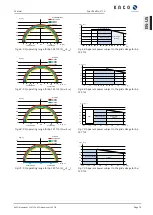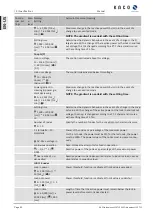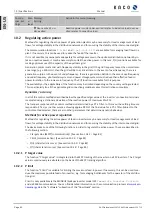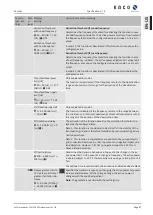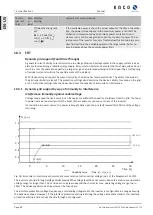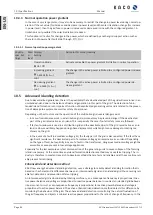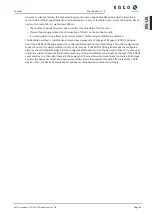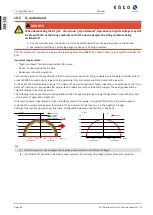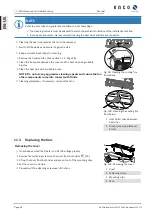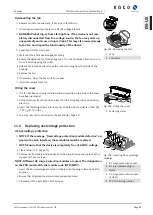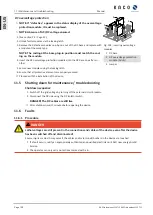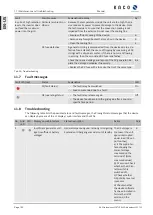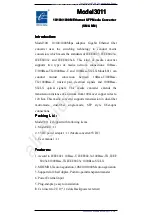
10.3.2 Dynamic grid support using a fast feeding of residual current
When dynamic grid support using a fast feeding of residual current is activated, then residual current is fed in
in addition to the immunity to interference properties against drops and spikes described above.
The inverter adapts its current feed as soon as a drop or spike incident occurs in order to bolster the grid volt-
age. The support takes place in the event of voltage drop in the form of over-excited reactive current (corre-
sponds to a capacitive load), in the event of voltage spike in the form of over-excited reactive current (corre-
sponds to an inductive load). In the reactive current priority mode, the effective current is reduced to the ex-
tent necessary to comply with the limits of the maximum continuous current of the inverter.
A dip or swell is detected if either the normal operating voltage range setting is exceeded by at least one
phase-phase or phase-neutral voltage, or if a step in the positive or negative sequence component of the volt-
age greater than the deadband setting occurs. The magnitude of the voltage step of the positive and negative
sequence voltage equates to the difference between the pre-fault voltage and the actual voltage based on the
reference voltage. The pre-fault voltage is calculated as a 50-periods mean value.
Fig. 91:
Formula n° 1
The reactive current is adapted using a response time of <20 ms and a transient time of <60 ms after the inci-
dent has occurred. Responses to changes in the voltage during the incident or to the voltage recovery at the
end of the incident take place with the same dynamic.
The formula for calculating the dynamic reactive current that is fed for the positive or negative phase sequence
voltage is:
Fig. 92:
Formula n° 2, depending from the nominal current IN of the inverter
For the positive and negative phase sequence voltage,
Δu
equates to the difference between the pre-fault volt-
age and the current voltage based on the reference voltage. The pre-fault voltage is calculated as a 1-min mean
value.
Fig. 93:
Formula n° 3
On account of the definition of a voltage jump in pre-norm EN50549-2 and in VDE-AR-N 4120 and VDE-AR-N
4110, it is typically the case that another voltage jump is detected when the incident is at an end, when the
fault is rectified and when the voltage returns to a normal state. The result of this is that in an active operation
mode a dynamic grid support using a fast feeding of residual current remains active even after the incident has
passed and that reactive current is fed in according to the formulae°(2) and (3). Dynamic grid support using d
fast feeding of residual current is then deactivated after a configurated minimum support time, usually 5 s.
I
b
1
I
Fig. 94:
Formula n° 4
10.3.3 Extract from FRT menu
Country-
spec. Set-
tings
Men
u
level
Display/
Setting
Action in this menu/meaning
4
1
2
3
4
FRT (Fault Ride
Through)
NOTE: The device supports dynamic grid stabilization (Fault
Ride-Through).NOTICE! More detailed information at
Manual
Specifications | 10
KACO blueplanet 110 TL3 KACO blueplanet 125 TL3
Page 89
EN-US

